This was my birthday dinner. I was lucky and happy to have “daddy” to join me for the evening, xx. From the outside, the restaurant looks like nothing, especially located in a rough area. Then we got a table at the front extension of the building (glad it is fully insulated), and the service was not the excellent level. We both felt a rough start. However, both of us really enjoyed the evening a lot on the food and vibe, in the end.
The servants were really passionate on introducing the plates, frankly in a bit funny way. If the same situation happens in French high-end places, I will find it strange. Yet in there, I found it cool and lovely. The dishes obviously are inspired by Chinese cuisines from various regions, however, they are not presented as the most authentic way but giving more layers of flavouring and seasoning. I personally think it is an important skill and certainly a nice way to make many traditional Chinese dishes “posh” taste.
The menu contains six sets, representing Banquet from Beijing, Dim Sum from Guangzhou, Fish from Anhui, Snack from Xi’an, Five flavour from Sichuan and Fruit from Hainan.
Of course, it does not follow exactly on the regional characteristic dishes, nevertheless, it is a smart way to organise the menu to make audience curious.
Noticeably, with only a few exception, the dishes in a set came together.
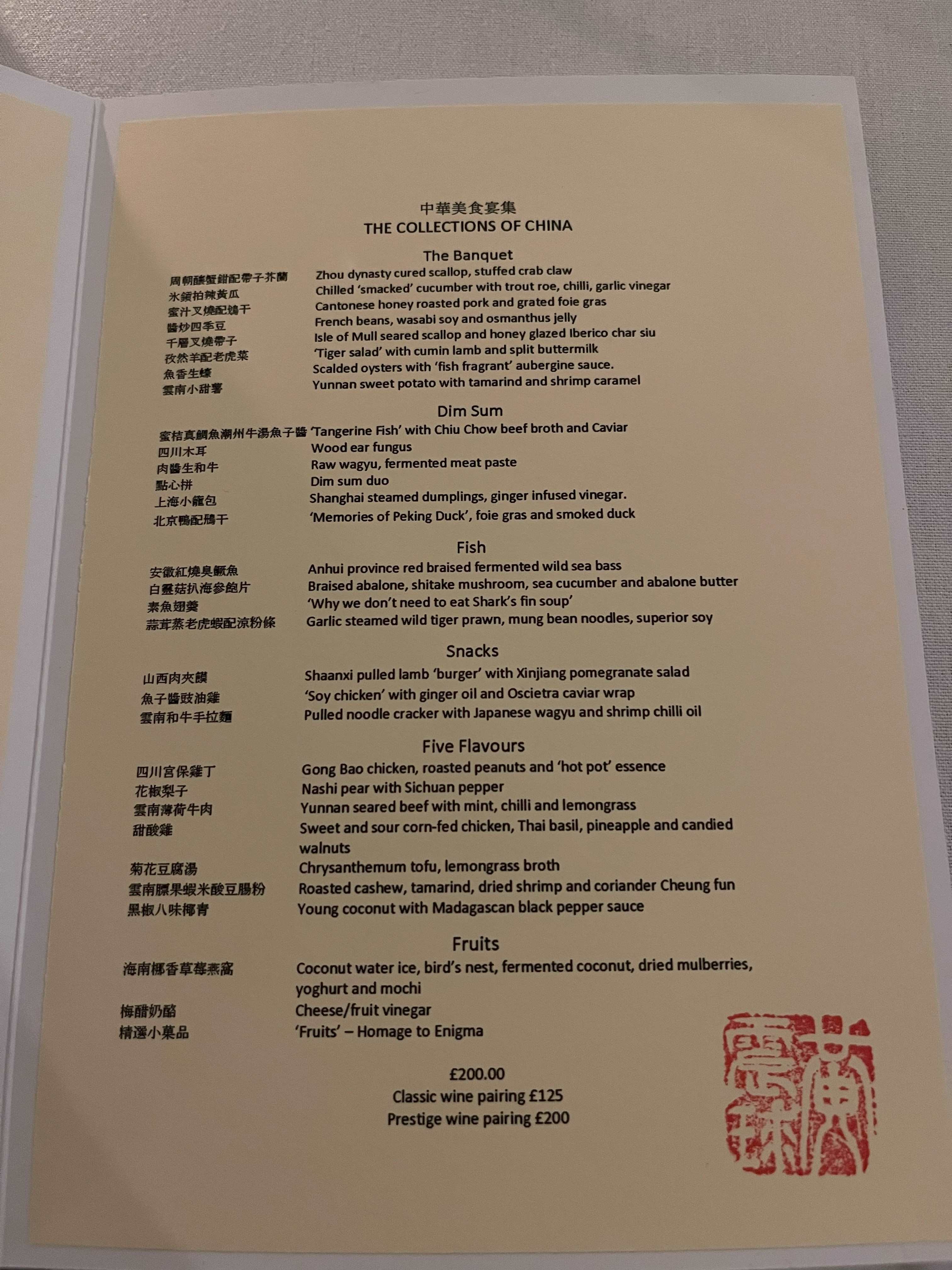 The first dishes, “Zhou dynasty cured scallop, stuffed crab claw” (if I remembered correctly, lol) in the menu was quite fun.
It had very rich flavour, i.e., the use of scallop and crab claw, but with very light-flavour and yet thickening sauce.
In the Chinese description, it also mentioned a vegetable “Gai lan”, and indeed I could taste a bit of crunchy green.
Yet, the main reason I found it fun was the presentation: there is a large “hat” atop the dish, made from many deep-fried thin stings of flour.
The first dishes, “Zhou dynasty cured scallop, stuffed crab claw” (if I remembered correctly, lol) in the menu was quite fun.
It had very rich flavour, i.e., the use of scallop and crab claw, but with very light-flavour and yet thickening sauce.
In the Chinese description, it also mentioned a vegetable “Gai lan”, and indeed I could taste a bit of crunchy green.
Yet, the main reason I found it fun was the presentation: there is a large “hat” atop the dish, made from many deep-fried thin stings of flour.
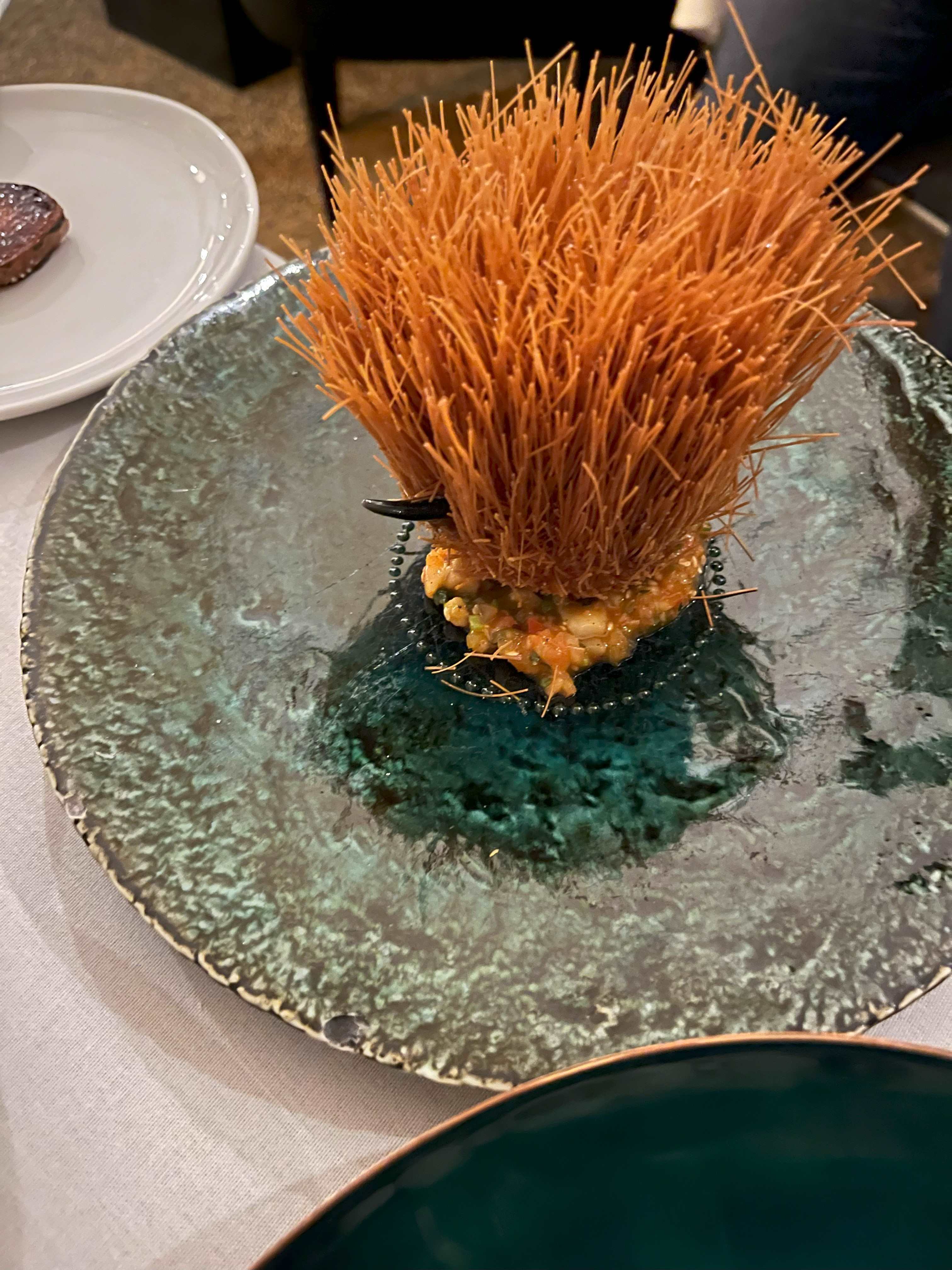 The next one, I liked, was Shanghai steamed dumpling, or many other Dim Sum place will use “Xiaolongbao” directly from Mandarin spelling.
First of all, it was not steamingly hot, so I could eat in one bite without burning my tongue.
Traditionally, there will be dipping vinegar, however, the chef injected directly inside the dumpling.
Last, the skin was not fragile nor too wet, holding the soup inside the dumping very well and also I could grab it by hands without breaking into the skin.
Compared with other restaurants, this is a trouble free experience.
Because of the good temperature, I could fully enjoy the entire dumpling, tasting the skin, umami from the soup and meaty filling, and slightly vinegar to balance the overwhelming of fatty and umami.
Though I should say, one may achieve a similar experience in a cheaper restaurant by timing when you bite the dumpling yourself.
However, looking into those details and thinking for the customers is exactly what I expected from a high-end restaurant.
The next one, I liked, was Shanghai steamed dumpling, or many other Dim Sum place will use “Xiaolongbao” directly from Mandarin spelling.
First of all, it was not steamingly hot, so I could eat in one bite without burning my tongue.
Traditionally, there will be dipping vinegar, however, the chef injected directly inside the dumpling.
Last, the skin was not fragile nor too wet, holding the soup inside the dumping very well and also I could grab it by hands without breaking into the skin.
Compared with other restaurants, this is a trouble free experience.
Because of the good temperature, I could fully enjoy the entire dumpling, tasting the skin, umami from the soup and meaty filling, and slightly vinegar to balance the overwhelming of fatty and umami.
Though I should say, one may achieve a similar experience in a cheaper restaurant by timing when you bite the dumpling yourself.
However, looking into those details and thinking for the customers is exactly what I expected from a high-end restaurant.
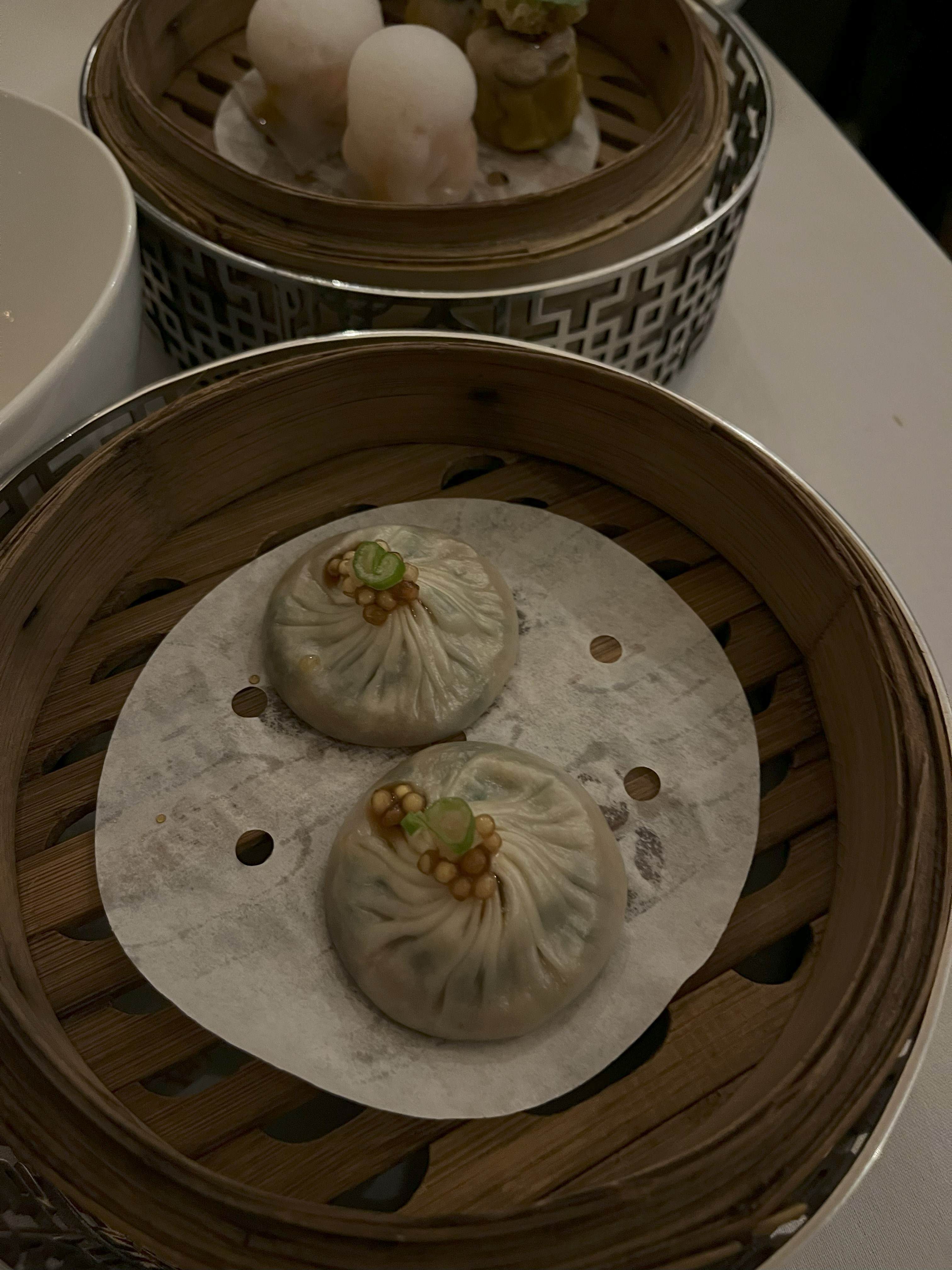 In the main dish section, i.e., Fish, I really enjoyed “Garlic steamed wild tiger prawn, mung bean noodles, superior soy”.
It is a fresh, Thailand style main dish.
One can argue it is a bit off the Chinese topic.
Nonetheless, all the previous dishes are between rich flavour or salad-style uncookedly fresh, while this one really stimulated the tongue: the sauce was very liquidy, and had a mix of sour, sugar, and chilli-garlic spicy.
The tiger prawn is perfect cooked, though I should not surprise given the price tag.
Yet I more enjoyed the bold change on the flavour, especially as a main dish; many restaurants have very heavily rich flavour for main dishes.
In the main dish section, i.e., Fish, I really enjoyed “Garlic steamed wild tiger prawn, mung bean noodles, superior soy”.
It is a fresh, Thailand style main dish.
One can argue it is a bit off the Chinese topic.
Nonetheless, all the previous dishes are between rich flavour or salad-style uncookedly fresh, while this one really stimulated the tongue: the sauce was very liquidy, and had a mix of sour, sugar, and chilli-garlic spicy.
The tiger prawn is perfect cooked, though I should not surprise given the price tag.
Yet I more enjoyed the bold change on the flavour, especially as a main dish; many restaurants have very heavily rich flavour for main dishes.
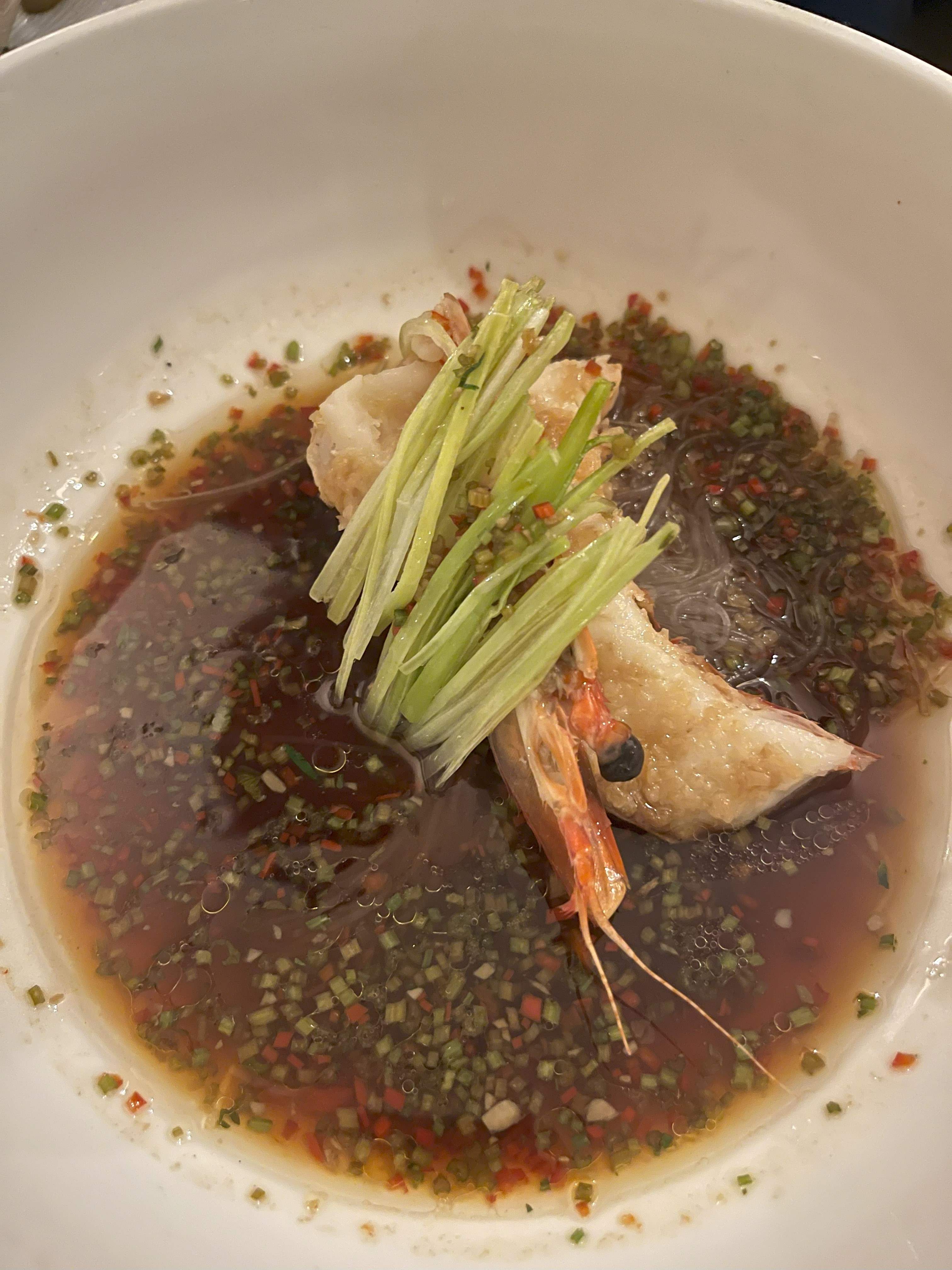 After the main-course set, we moved to snacks.
I liked Shaanxi “burger” or “肉夹馍” in Chinese, because it was fun when being ask to assemble yourself.
Compared with more traditional and slightly dry “bun”, this was more soft with a light grill on the surface.
The main filling was lamb but contained more textures from various vegetables, instead of just meat and chilli.
Were they authentic? Not really.
Yet I think it was an improvement so it matched the price tag: providing more flavour and widening the audience.
After the main-course set, we moved to snacks.
I liked Shaanxi “burger” or “肉夹馍” in Chinese, because it was fun when being ask to assemble yourself.
Compared with more traditional and slightly dry “bun”, this was more soft with a light grill on the surface.
The main filling was lamb but contained more textures from various vegetables, instead of just meat and chilli.
Were they authentic? Not really.
Yet I think it was an improvement so it matched the price tag: providing more flavour and widening the audience.
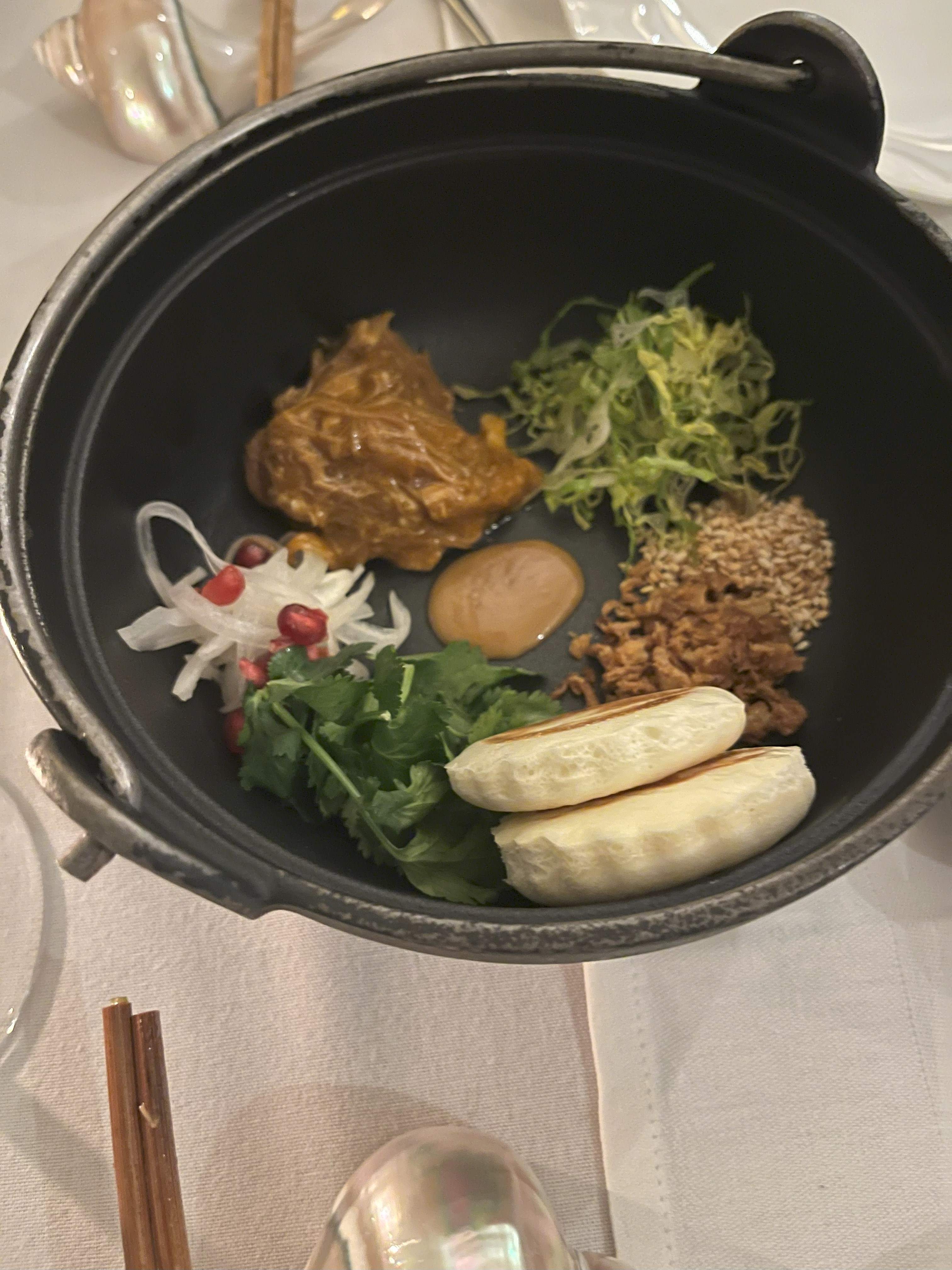 The last dish I liked was “Gong Bao Chicken”, but I had no picture.
I was certainly enjoying myself then.
It was a hotpot styling dish surprisingly, however, the chicken was not soaked into the soup while basically steamed by the hotpot soup.
The idea there was the steam from the numbing-flavour hotpot soup gave extra flavour and smell to the already perfected flavoured and cooked Gong Bao chicken on top.
It was fun and provided some elements related to hot pot, which is famous in Sichuan area.
Hot pot is a difficult factor to present in these high-end restaurants, but making a show with it, is a cute idea.
The last dish I liked was “Gong Bao Chicken”, but I had no picture.
I was certainly enjoying myself then.
It was a hotpot styling dish surprisingly, however, the chicken was not soaked into the soup while basically steamed by the hotpot soup.
The idea there was the steam from the numbing-flavour hotpot soup gave extra flavour and smell to the already perfected flavoured and cooked Gong Bao chicken on top.
It was fun and provided some elements related to hot pot, which is famous in Sichuan area.
Hot pot is a difficult factor to present in these high-end restaurants, but making a show with it, is a cute idea.
Time to say the end of this post. I enjoyed it, daddy enjoyed it, and we were both happy men in that evening. It was not a 100% authentic, but I would say a clever uplifting of many traditional dishes: more layers of flavour, some fun and good-level activities (i.e. not too much), and a great organisation of dishes. I do have some suggestion here. Since we got a small two-person table and all the dishes in a set came together with some being presented in large plates, (1) we often run out of space on the table, (2) we rarely remembered the description, and (3) picking up small bites of food from large plates by chopsticks was not easy at all (we ended up use hands directly). I think the better way here is, presenting the set half-by-half and using smaller plates so they are more friendly for chopsticks.
